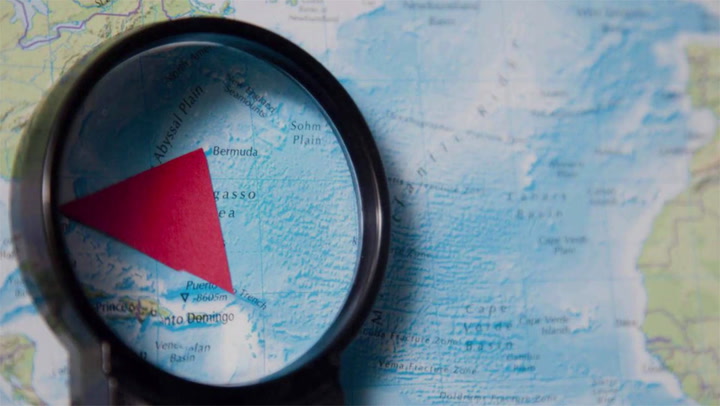Summary
If you’ve traveled to the Caribbean, you’ve probably crossed the mythical region.
Fact checked by Elizabeth MacLennan
:max_bytes(150000):strip_icc():format(webp)/bermuda-triangle-BERMANGLE1019-436147ef3b384779a846eeff910bf323.jpg)
The Bermuda Triangle has been shrouded in mystery for centuries, long rumored to be a place of alien abductions and ghost sightings. Strange disappearances were recorded there in 1872 and 1881 — in each case, a ship was found adrift without its crew. However, the term “Bermuda Triangle” was not coined until 1964, and many disappearances have been chalked up to natural disasters like waterspouts, a type of overwater tornado, as well as sky-high waves and powerful hurricanes.
Two incidents are still considered mysteries of the Bermuda Triangle, specifically Flight 19 and the USS Cyclops. On Dec. 5, 1945, experienced airmen lost their direction during a training exercise. After the 14 pilots lost contact, 13 rescuers were scrambled and lost to the same conditions. In 1918, the USS Cyclops went missing without a trace with 309 crewmen onboard. But these occurrences are not uncommon within the Bermuda Triangle.
There is no clear indication that these disappearances have anything to do with the supernatural; however, they remain unexplained. Therefore, it’s only natural that people feel slightly anxious about crossing it. But is there really anything special about this geographical area?
What is the Bermuda Triangle?
The Bermuda Triangle is an area of the Atlantic Ocean that doesn’t necessarily have an agreed-upon boundary. The southeastern coast of the U.S., Bermuda, and the islands of Cuba, Hispaniola, Jamaica, and Puerto Rico are the general parameters of this triangle-like space. According to some calculations, the Bermuda Triangle encompasses anywhere between 500,000 and 1.5 million square miles. It may seem like a large swath of sea, but remember the ocean covers about 70 percent of Earth’s surface.
Also known as the Devil’s Triangle, this area of the Atlantic Ocean is rife with conspiracy theories. While there is no official number of missing vessels or planes within the area, the U.S. Navy estimates that around 50 ships and 20 aircraft have gone missing there. Despite these figures and spooky stories, data does not support the notion that disappearances are more likely in this location. You would be surprised to learn how many individuals have sailed or flown across the area without encountering anything unusual.
Why do things disappear in the Bermuda Triangle?
Conspiracy theorists have proposed many different (though mostly superstitious and implausible) reasons for such disappearances and disasters in the Bermuda Triangle. Some theorists argue that the area is a hotbed of alien activity, suggesting these extraterrestrial beings may be abducting humans for their studies. Furthermore, others have posited that it’s the real-life location of the lost continent of Atlantis, thereby making it a portal to another dimension.
Some evidence suggests the Bermuda Triangle hosts a geomagnetic anomaly that can cause navigation systems to point to “true” north rather than “magnetic” north, as reported by the National Oceanic and Atmospheric Administration (NOAA). However, it should be noted that magnetic anomalies can be found all over the world. Additionally, explosive methane gas could rise to the water’s surface, potentially causing ships to sink, according to National Geographic.
Superstitions and stories persist because this area is perceived to have more disappearances than other parts of the world; however, this belief is unfounded. When the World Wildlife Fund reported the most dangerous waters on the planet, the Bermuda Triangle wasn’t mentioned.
The most likely culprit for these mysteries is not really a mystery at all. Most scientific explanations include the many tropical storms and hurricanes that are known in this region, according to NOAA. The Gulf Stream Current, which moves warm water from the Gulf of Mexico to the Atlantic, can cause rapid onset of extreme weather changes. Think of it like a thunderstorm, which occurs when warm and cold air collide.
Do pilots actually avoid it?
Due to superstition, many assume pilots actively avoid this expanse of ocean. Nevertheless, anyone who has flown from Miami to San Juan, Puerto Rico, likely knows that this assumption is unfounded. If it were accurate, everyone’s vacations to the most breathtaking destinations in the Caribbean would be jeopardized. Numerous flights and cruises traverse the Bermuda Triangle, indicating that the area is not generally avoided.
In terms of navigation, flights are consistently monitored by air traffic control, providing pilots with assistance if a navigation failure occurs. Weather conditions are also meticulously tracked whenever a plane is set to take off. While accidents continue to happen, they do not occur any more frequently than in other locations worldwide.
Investigating Bermuda Triangle conspiracy theories leans more toward a paranormal pursuit than a scientific one. Pilots who might avoid the Bermuda Triangle are likely just intrigued by the supernatural or UFO phenomena. While entertaining these theories can undoubtedly be engaging, you can be reassured that the airline industry does not plan its routes around ghost stories.




